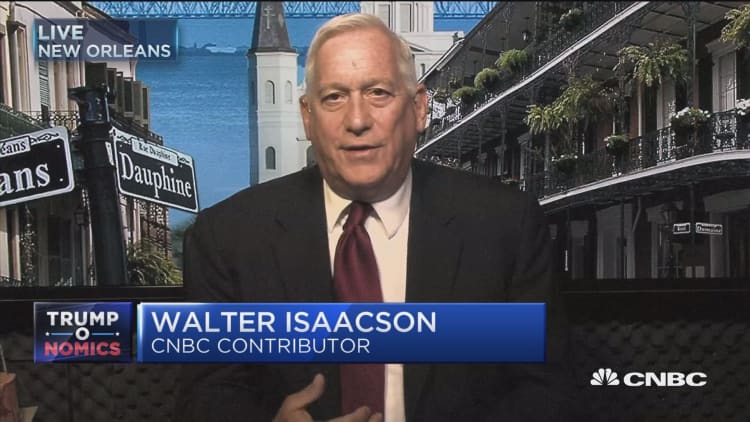
Although a few communities are removing a few statues, the nation's Confederate memorial infrastructure — estates, plantations, battlefields, graveyards, birthplaces, shrines and at least two huge obelisks — is too vast and diverse to be moved, hidden or destroyed.
The sites range from small, privately owned house museums honoring obscure soldiers to the massive bas-reliefs carved in the side of Stone Mountain, Ga., that historian Fitzhugh Brundage calls "a billboard to white nationalism.''
These places are an almost inexhaustible source of potential flash points for battles between those who want to preserve or to remove Confederate symbols.
More from USA Today:
Swastika competes with other symbols of hate
Hate goes online
Future of pro-Confederate rallies in doubt
They're an issue that President Trump raised Thursday on Twitter: "Sad to see the history and culture of our great country being ripped apart with the removal of our beautiful statues and monuments. You can't change history, but you can learn from it. Robert E Lee, Stonewall Jackson — who's next, Washington, Jefferson?''
"It's a sticky wicket,'' Christy Coleman, CEO of the American Civil War Museum, said in an interview earlier this week. "I'm a public educator, and, like 'em or not, these things have a story to tell.''
Erasing Confederate sites from the American landscape would be difficult or impossible.
There are a lot of them — more than 700 statues and monuments in 31 states. That does not include things like homesteads and museums, according to The Southern Poverty Law Center. There are more than 40 in Kentucky, even though two-thirds of Kentuckians who fought in the Civil War did so for the Union.
And many of these sites not especially portable.
Beauvoir, the Mississippi homestead of Confederate President Jefferson Davis, is controlled by the state chapter of the Sons of Confederate Veterans, a neo-Confederate group. The only thing that's going to move the 1852 mansion, one of only 2,600 National Historic Landmarks and a top Gulf Coast tourist attraction, is a hurricane.
But Beauvoir is a mere paperweight compared to the 35-story concrete obelisk (one of the nation's largest) in a state park in Fairview, Ky., to mark Davis's birthplace. .
Similarly, in Asheville, N.C., the most notable downtown landmark is a 75-foot high granite obelisk that sits in a public square. it honors a Reconstruction-era governor who'd owned slaves and opposed the freed slaves' right to vote.
There's also the question Trump cites: Which sites should be condemned? Where do you draw the line?
Take Robert E. Lee, the Confederate general venerated by generations of white Southerners (as well as many in the North). He came to personify the now-discredited "Lost Cause" argument that South rebelled in 1861 not over slavery but states' rights.
Although Lee's statue was hauled away this May in New Orleans and is under siege in Charlottesville, his former home in Arlington — built by slaves — is administered by the National Park Service as a memorial to him.
Arlington House, where Lee lived before the Civil War, is in Arlington National Cemetery, overlooking the National Mall. In the past decade it received a multimillion-dollar renovation from the park service that included restoration of slave quarters. After it was damaged in an earthquake in 2011, financier David Rubenstein contributed $12.4 million to a private fund for further work.
Why should Lee's memory be banished from a New Orleans traffic circle and lovingly preserved on sacred ground at Arlington?
Brundage, chairman of the University of North Carolina-Chapel Hill history department, is an expert on Confederate history. He said this week that he thinks the contrasting treatment of Lee has to do with intent and context.
Lee had no real connection to the New Orleans. The statue was erected decades after the Civil War primarily as a symbol of white resistance to, and triumph over, federal efforts to empower and enfranchise former slaves.
And Brundage said it's one thing to preserve Lee's house as a museum, to which a visit is optional. It's another to put his statue outside a courthouse, which some citizens may be obliged to enter.
In a museum, even an open air one like the Gettysburg battlefield, a memorial's meaning can be explained. But, he says, "you can't do that if it's sitting in a traffic circle.''
WATCH: Walter Isaacson: Trump is 'unhinged' to focus on Confederate statues over actual agenda


